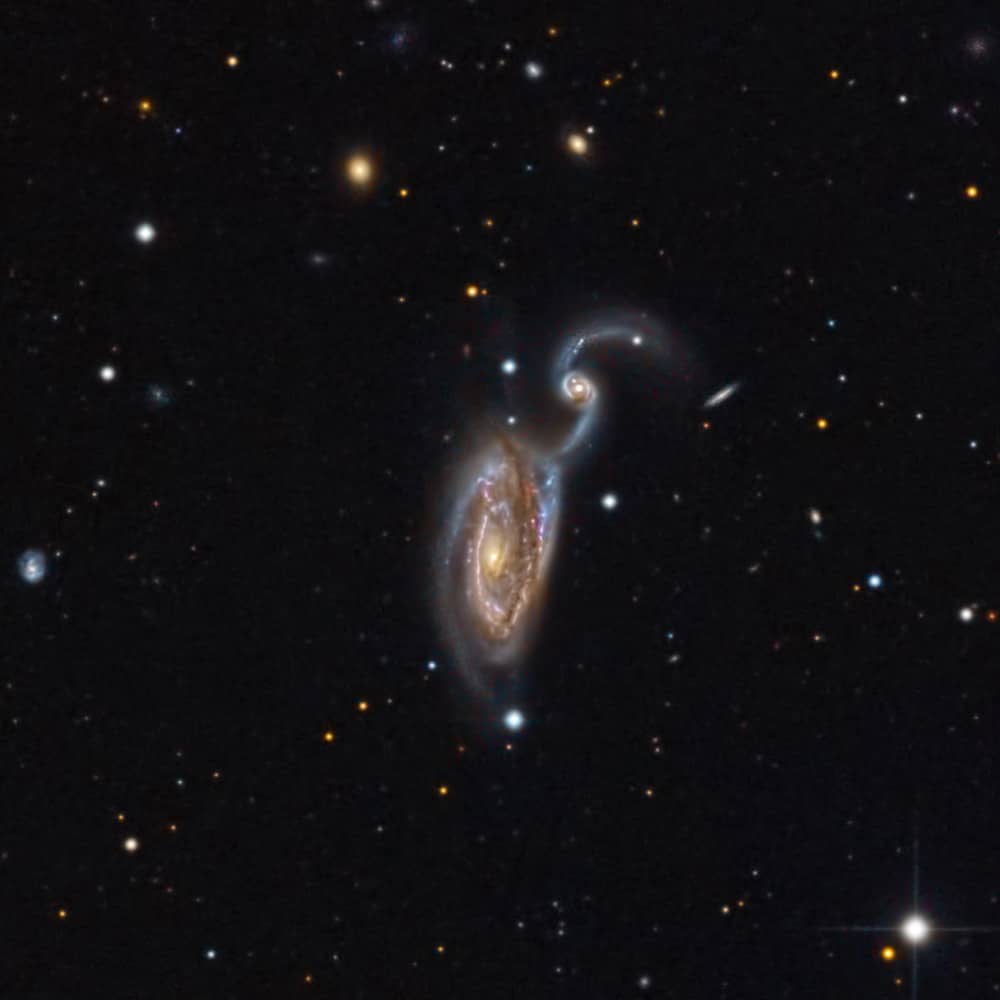The Cosmos with ARP 84
NGC 5395 and 5394, together known as Arp 84 or the Heron Galaxy, are two interacting galaxies located just over 160 million light-years away from Earth in the small northern constellation of Canes Venatici (the Hunting Dogs). It takes little imagination to see a blue heron’s body, complete with neck, head and a beak reaching out to a nearby fish.
The larger, NGC 5395, is a somewhat elongated, nearly face-on spiral galaxy of about 140 thousand light-years across, located about 162 million light-years away from Earth, while it receding from us at approximately 3511 kilometers per second. NGC 5394, also face-on galaxy, is a barred spiral of about 90 thousand light-years across, located 161 million light-years away, while it is receding from us at approximately 3448 kilometers per second.
The main disk of NGC 5395, with a bright, elongated central region, is asymmetric and distorted due to interaction with its nearby companion NGC 5294. The dominant spiral arm of this two-armed spiral galaxy forms a large ring somewhat off center with respect to the nucleus. Obscuring dust lanes can be seen throughout the galaxy.
The smaller galaxy, NGC 5394, has an oval disk, two long, fairly symmetric, open tidal arms, and very bright inner spiral arms, disjoint from the outer tidal arms. Most of the gas in NGC 5394 is concentrated around the center, so is suitable for fueling the ongoing starburst in its center. Despite the presence of hydrogen gas, two of the three inner spiral arms of NGC 5394 show no evidence of ongoing star formation.
On June 25, 2000 the Type Ic supernova SN 2000cr was discovered in NGC 5395, northeast of the nucleus.
Types Ic (and Ib) supernovae are caused by the core collapse of massive stars and are usually referred to as stripped core-collapse supernovae. These stars have shed (or been stripped of) their outer envelope of hydrogen, and lack the absorption line of silicon. Compared to Type Ib, Type Ic supernovae have lost more of their initial envelope, including most of their helium.
